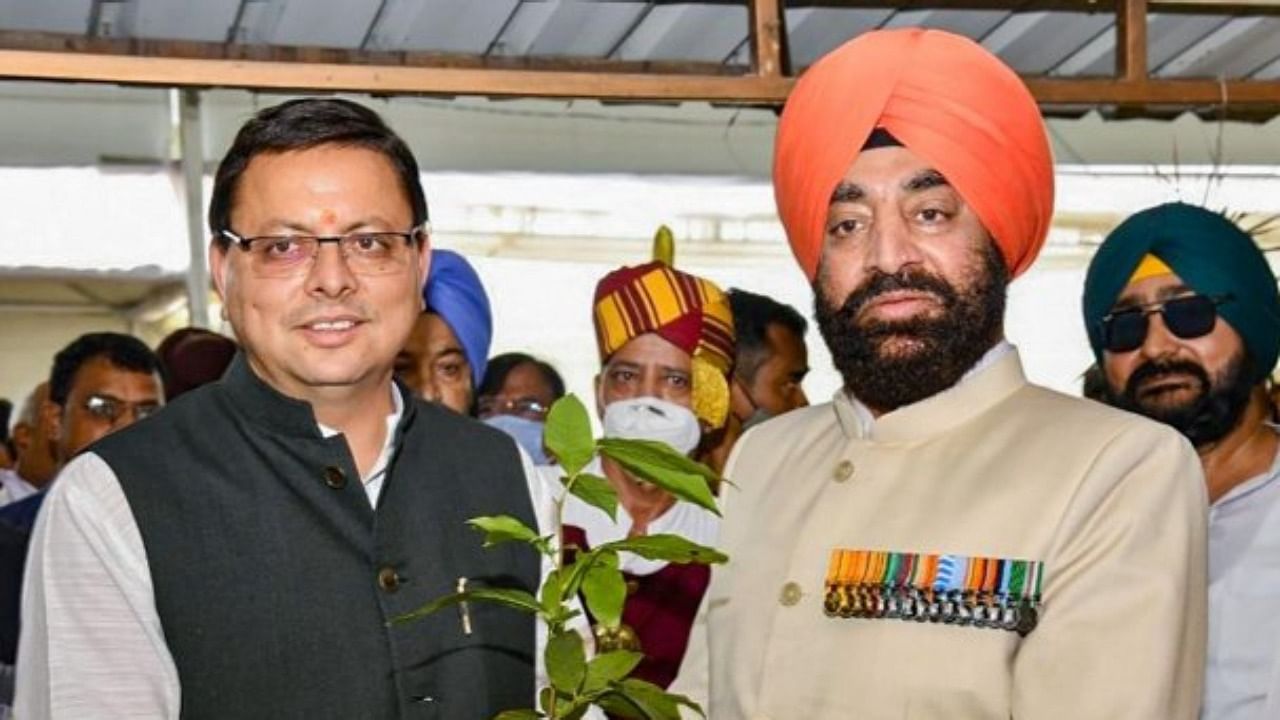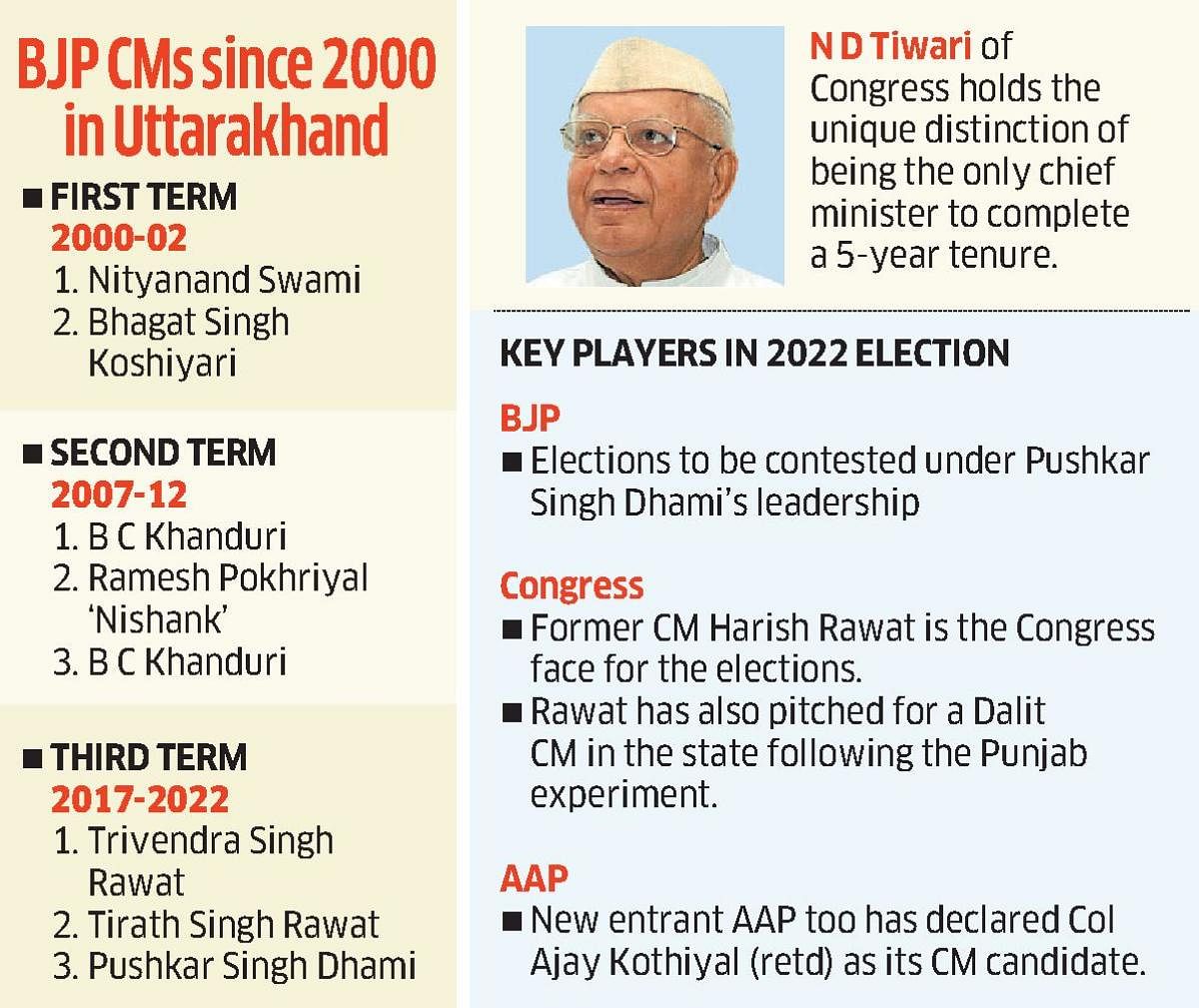

On July 3, BJP sprung up a surprise by picking up a greenhorn – 45 year-old, two-term MLA Pushkar Singh Dhami as the chief minister of Uttarakhand. Dhami was the third CM in a matter of four months, exposing the BJP’s Achilles Heel in the hill state where it has struggled to build a credible leadership every time it got a shot at power. This is the third time that BJP is in power in Uttarakhand since its formation in 2000 and it has found itself difficult to retain its CM for the entire term.
Incidentally, Trivendra Singh Rawat, who was appointed CM in 2017 after the party won overwhelming majority, was the longest serving BJP chief minister with a tenure of three years and 357 days. Ironically, his successor Tirath Singh Rawat, Lok Sabha member from Garhwal, had the shortest tenure at the helm – 116 days – before his unceremonious ouster in July.
In a bid to groom new leadership, the BJP top brass picked up Dhami as CM causing heartburn for many a veteran who were eyeing the top executive post in the state. The signs of discord were all there to see with senior ministers Satpal Maharaj and Harak Singh Rawat – both chief ministerial aspirants – exiting the BJP legislature party meeting on July 3 as Dhami was chosen the leader.
Dhami, the youngest CM of the state, had to swing into a damage control exercise even before the swearing-in ceremony on July 4. With help from the central leadership who did some tough talking to make the upset seniors fall in line, Dhami met Maharaj and other senior leaders to “seek their blessings” for the future. The swearing-in ceremony on the evening of July 4 had to be delayed to ensure the presence of all the party legislators.
Also read: 'Accidental CM' Channi faces hurdles
A result of the strong reaction to Dhami’s elevation was continuance of the same set of ministers in the previous government headed by Tirath Singh Rawat, denying the BJP leadership an opportunity to effect a complete change as it did in Gujarat later.
The script for Trivendra Singh Rawat’s exit, just before the start of Kumbh Mela at Haridwar, was written after his controversial decisions to bring 51 temples in the hill-state under government control by creating the Devasthanam Board. His decision to create a separate administrative division of Gairsain in addition to the existing Garhwal and Kumaon too had ruffled many feathers.
Trivendra’s successor Tirath Singh Rawat reversed the two unpopular decisions as well as eased curbs on pilgrims reaching Haridwar for the Kumbh mela amid the second wave of Covid-19 pandemic. Over the past couple of months, there has been a grudging acceptance of Dhami’s leadership. BJP leaders too have been playing their bit through regular visits to the state. Prime Minister Narendra Modi is expected to visit the state early next month to pay obeisance at the Kedarnath shrine before it shuts down for winter months after Diwali.
Union Minister Pralhad Joshi, BJP in-charge of Uttarakhand elections, backed Dhami to the hilt by declaring that he will continue as cm after the assembly elections slated for early next year.
For now, BJP appears to be banking on the non-controversial image and the youth appeal of the new CM with the hope of wiping out the anti-incumbency sentiment of his predecessors. A new trouble seems to be coming up for the BJP due to the war of words between senior minister Harak Singh Rawat and former CM Trivendra Singh Rawat.
The internal differences could threaten BJP’s prospects of re-election, which has never happened in the state’s just over two decades of existence. Last week, Harak Singh Rawat met Home Minister Amit Shah with his grievances ahead of elections. A few more trips by the central leadership to the hill state would be required to put the house in order.
Check out latest videos from DH:
